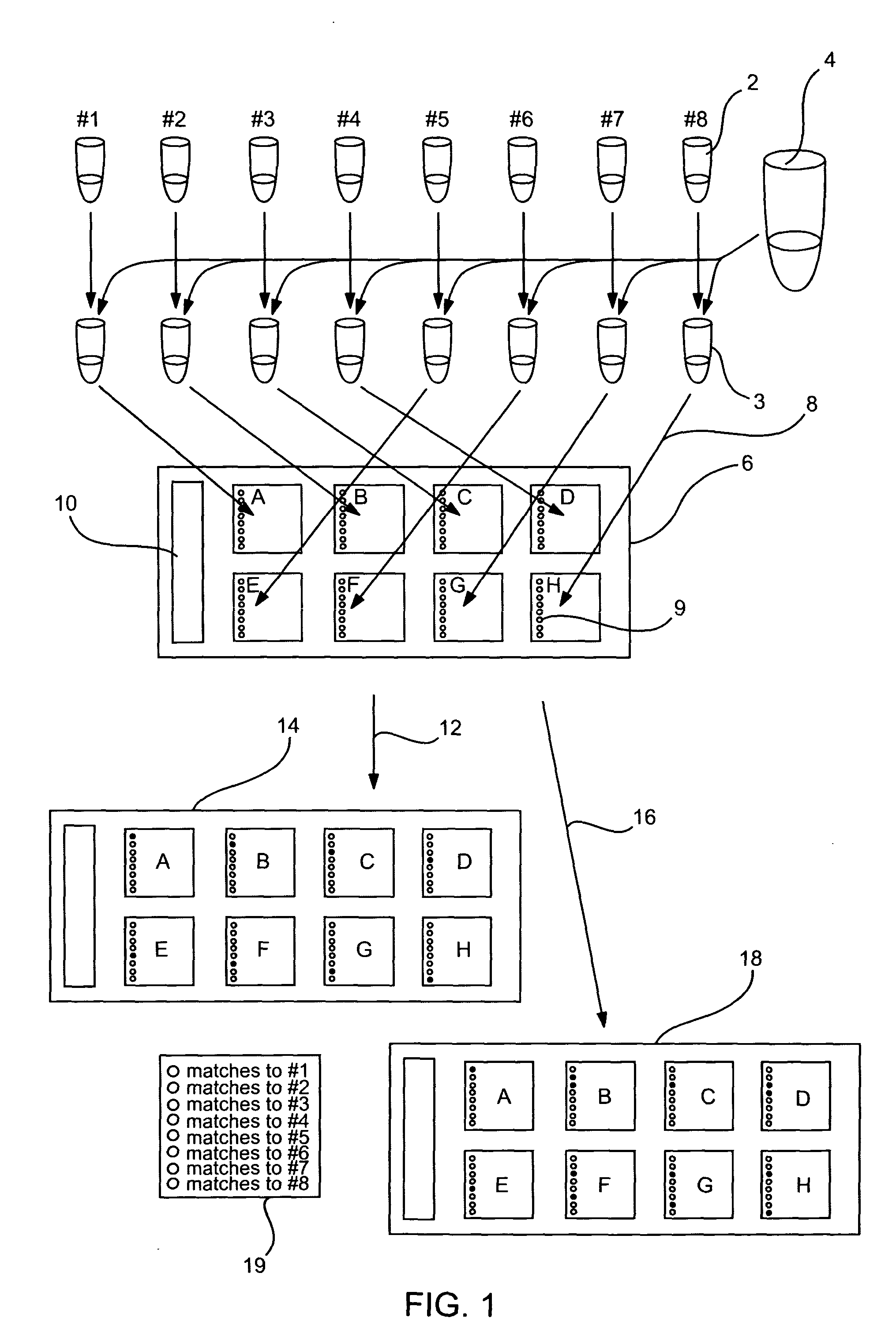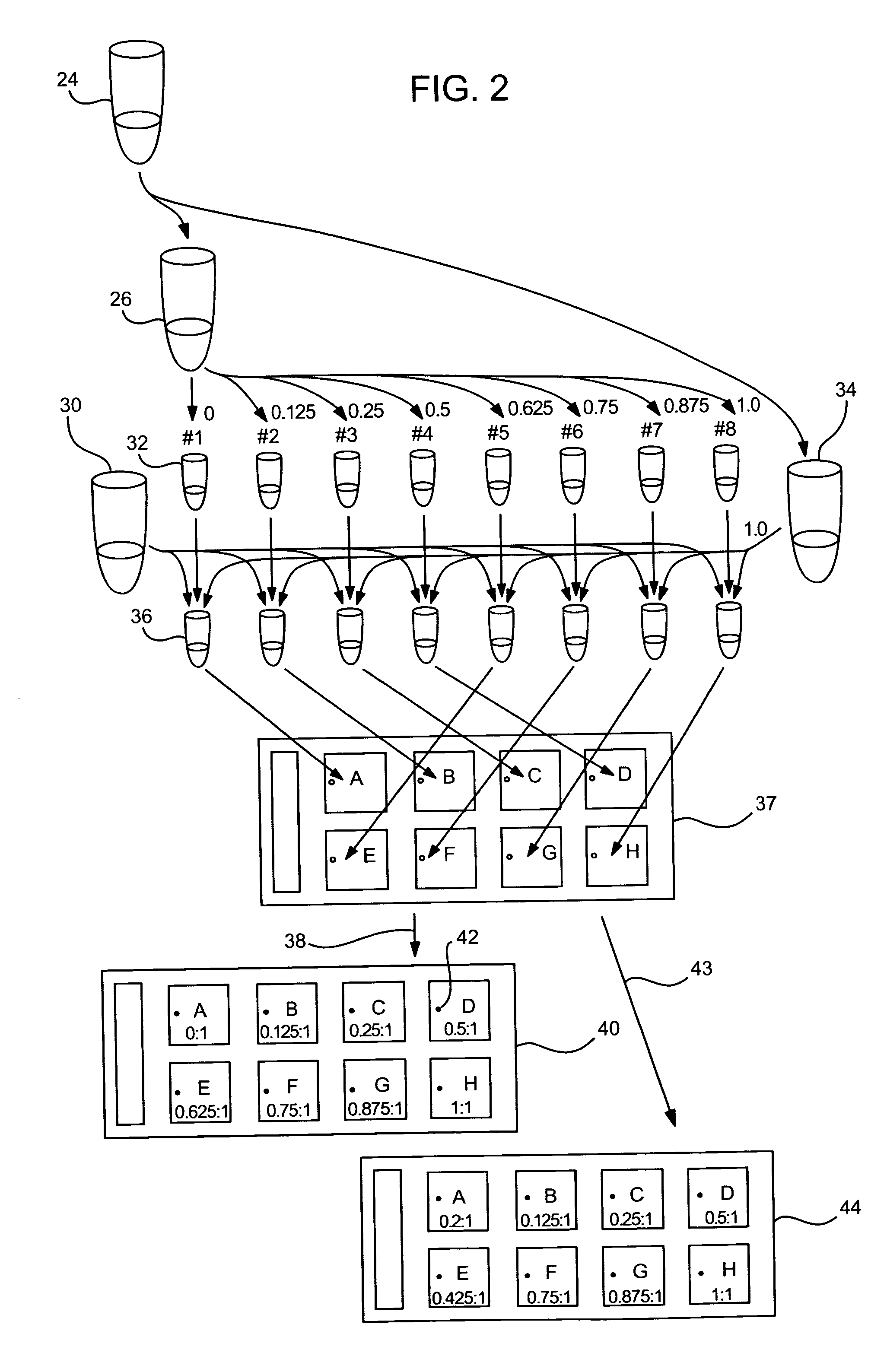Methods to detect cross-contamination between samples contacted with a multi-array substrate
a multi-array substrate and cross-contamination technology, applied in the field of arrays, can solve the problems of inability to reliably and accurately detect the quality of the data obtained in the specific use of bioreactors/fermenters, the method, although quite effective, is tedious and costly,
- Summary
- Abstract
- Description
- Claims
- Application Information
AI Technical Summary
Problems solved by technology
Method used
Image
Examples
example 1
[0136] In the a first method, N, (where N represents the number of arrays of a multi-array substrate, for exemplary purposes N by be 1, 2, up to about 4, up to about 8, up to about 10, up to about 12, up to about 24, 36, 48, 96 or a multiple thereof, e.g., 384 or more), unique spike-in contamination control targets are individually mixed with the hybridization buffer and target of interest. These N aliquots are then dispensed onto the desired probe arrays and hybridized. The N distinguishing contamination control targets are designed to: not cross-hybridize with the targets of interest, not have homology to the other N-1 contamination control targets or probes of interest. For example, for a substrate of eight arrays, N would be 8 and the target preparation method is shown in FIG. 1.
[0137] Each array of the multi-array substrate contains a set of M contamination control probes which are perfect matches to each of the N contamination control targets. M equals N in count, or an integ...
example 2
[0139] In a second method, a single spike-in contamination control target is prepared (in tube 24) and two-color labeled to provide the contents of tubes 26 and 34. One color (e.g., green; Cy3) is reserved and used as a reference and the other (e.g., red; Cy5) is successively diluted into N aliquots where the spike-in concentration [x] of each aliquot is [x / N]. In other words, for an substrate of eight arrays, N=8, the spike-in control targets would be prepared in the following concentrations: ⅛, ¼, ⅜, ½, ⅝, ¾, ⅞ and 1x. For example, for an array of eight sub-arrays, where N=8, the target preparation is shown in FIG. 2.
[0140] Each array of a multi-array substrate contains a single contamination control probe which is a perfect match to the contamination control target. When this array of sub-arrays is hybridized, binding of the contamination control probes can be inspected to determine if any cross-contamination occurred during hybridization. In each array, the contamination contro...
PUM
| Property | Measurement | Unit |
|---|---|---|
| Composition | aaaaa | aaaaa |
| Concentration | aaaaa | aaaaa |
Abstract
Description
Claims
Application Information
 Login to View More
Login to View More - R&D
- Intellectual Property
- Life Sciences
- Materials
- Tech Scout
- Unparalleled Data Quality
- Higher Quality Content
- 60% Fewer Hallucinations
Browse by: Latest US Patents, China's latest patents, Technical Efficacy Thesaurus, Application Domain, Technology Topic, Popular Technical Reports.
© 2025 PatSnap. All rights reserved.Legal|Privacy policy|Modern Slavery Act Transparency Statement|Sitemap|About US| Contact US: help@patsnap.com


